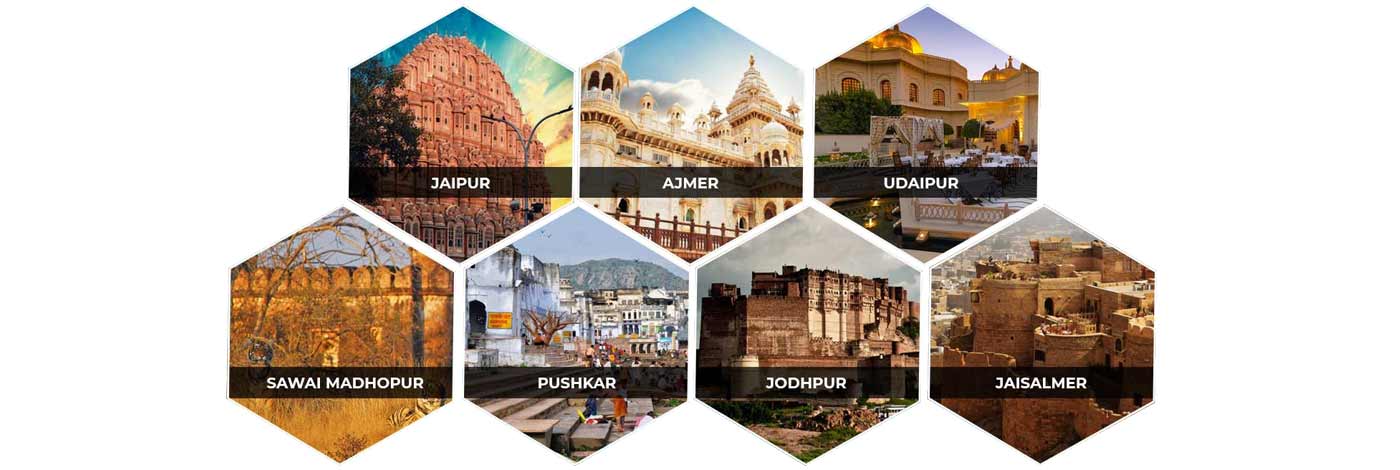
Jaigarh Fort Jaipur
The Jaigarh Fort, built by Maharaja Jai Singh II in the 18th Century, is a magnificent palace located on the "Cheel ka Teela" (Hill of the Eagle) promontory of the Aravallis in Jaipur, Rajasthan. Designed by an architect named Vidyadhar, the fort was built to depict the affluent culture of the city of Jaipur. Since the fort is located on an altitude, the entire city of Jaipur can be seen from the top. It mainly served as the residential building of the kings but later on, was also used as the artillery warehouse.
Jaigarh Fort has a rich history behind it. During the Mughal period, Jaigarh Fort, located 150 miles away from the capital, became one of the main cannon foundries due to abundance of arms and ammunition there. It was also a storage place for arms, ammunition and other important requirements of war. It was looked after by Dara Shikoh, but when he was defeated by Aurangzeb, the fort came under the rule of Jai Singh, who renovated and refurbished it. One interesting story goes with the history of the fort. According to folklore, the rulers buried a huge treasure in the soil of the Fort. However, the treasure was never recovered.
One can get a panoramic view of Jaipur from the fort, due to its location on top of a hill. Structurally, the fort looks like its immediate neighbour, Amber Fort, which is located almost 400 metres down a common road. Otherwise known as the Victory Fort, this huge structure is 3 km in length and 1 km in width. The outer layers of the fort are made of red sandstone and the internal layout is quite interesting, with a beautiful square garden at the centre.
There are huge court rooms and halls provided with screened windows. The fort encloses the largest cannon in the world, called the Jaivana, which is kept on wheels. The grand palace complex consists of Laxmi Vilas, Vilas Mandir, Lalit Mandir and the Aram Mandir, which used to be the residences of the royal family during the reign of the kings. Two vintage temples have increased the attraction of the fort, one being the Ram Hari Har temple built in the 10th Century, and the Kal Bhairav Temple, built in the 12th Century.
The fort is well protected from all sides with high walls. There is an armory and a hall for the warriors, along with a museum that preserves old clothes, manuscripts, weapons and artworks of the Rajputs. One can find a watch tower at the centre, which provides a beautiful view of the landscape around. The adjoining fort of Amber is connected to the Jaigarh fort through a secret subterranean passage. It was designed for emergency escapes of the ladies and children. There is a central water reservoir in the fort to provide water to the Amber Fort.
History Of The Fort
• The Jaigarh Fort is an opulent structure built in the early 18th century. Amer, the city in which the Jaigarh and the Amer fort are located, was ruled by the Kachawahas from the early 10th century.
• During the Mughal dynasty, the Jaigarh Fort became their empire's main cannon foundry and was also used as storage stronghold to store ammunition and other metal required for war.
• During the successive wars that broke out in the Mughal dynasty in 1658, the cannon outpost at the Jaigarh fort was protected until the protector, Dara Shikoh, was defeated and executed by his own brother, Aurangzeb.
• Later, the fort was handed over to Jai Singh II and he is known to have molded the great ‘Jaivana Cannon', along with using the devices and the foundries inside the fort.
Architecture
The fort is built with thick walls of red sandstone and is spread over a vast range of 3 kilometers in length, with a width of one kilometer. The fort houses the world's greatest cannon on wheels known as the 'Jaivana Cannon' and a huge palace complex. This includes the Laxmi Vilas, Lalit Mandir, Aram Mandir and the Vilas Mandir. The fort has a well-tended garden which can be viewed by tourists even today along with an armory and a museum.
Important Battles
The Jaigarh fort was never conquered in battle, and was also the strongest of the three forts in Jaipur. During the Mughal dynasty, the fort bore witness to an ambush by Aurangzeb who defeated and killed his own brother who was the overseer of the cannon outpost in the fort. Apart from that, the fort never witnessed any major resistance, and only test-fired the world's largest cannon, once!
 +91 9549279999
+91 9549279999 
